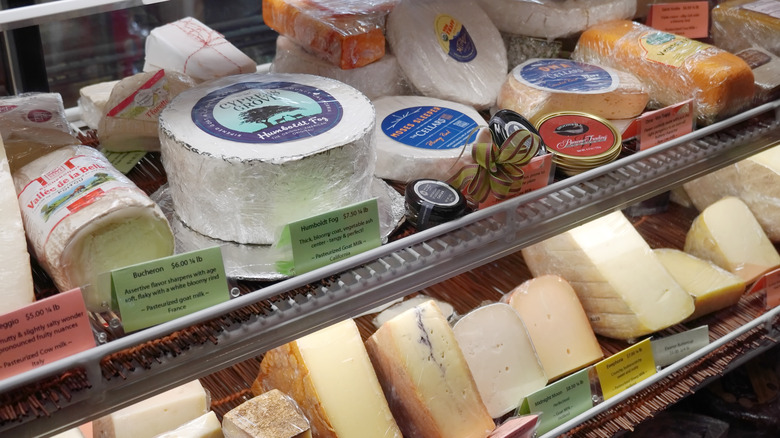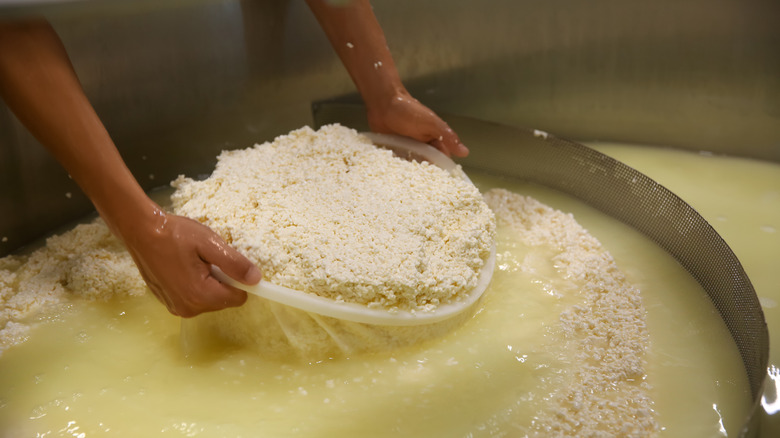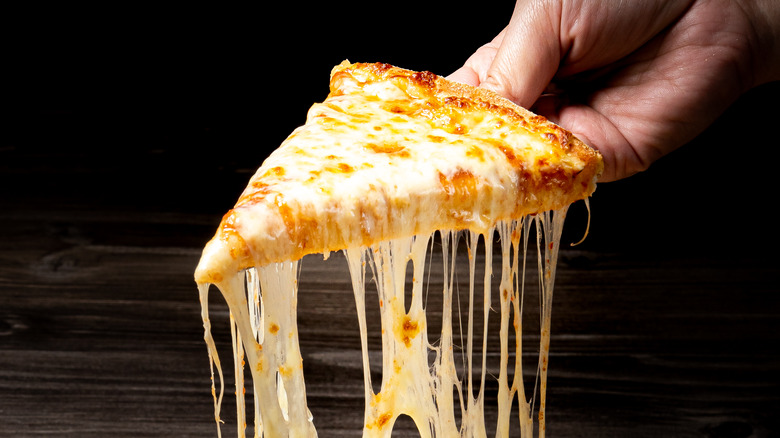The Reason Some Cheeses Melt Better Than Others
Ever wonder why American is the most popular cheese for cheeseburgers (via Fansided)? Or mozzarella cheese is the default cheese for pizza? Or why you'll find paneer, but not, say, brie, in curries? While, certainly, flavor is a factor, the fact is that each of these cheeses melts perfectly for the dish with which it is paired.
For example, when placed atop a hot burger patty, American cheese softens and melts. You wouldn't get that result from, say, sliced halloumi. Mozzarella melts into long, stretchy strings that nevertheless are capable of gripping the pizza dough, rather than sliding or melting off. You wouldn't be able to get that result from, say, parmesan. And paneer doesn't melt at all, which is exactly what is desired when it comes to a cheese that can stand up to a hot curry sauce. The same cannot be said for, say, brie.
Although all dairy cheese is made from the same four essential ingredients — milk, salt, rennet, and bacteria, according to U.S. Dairy — every variety of cheese has its own unique melting profile, including what temperature it melts at and to what degree it does or does not liquify. The reason some cheeses melt better than others has to do with several factors, including that cheese's specific moisture, fat content, and acid content, as well as how long the cheese is permitted to age.
But all those factors ultimately boil down to a protein called "casein" (pronounced KAY-seen).
Casein is the essential building block of cheese
Dairy cheese is made, first and foremost, from milk, which is, for the most part, a combination of water, fat, proteins, and sugar (via Britannica). Milk contains two types of proteins: casein, representing 80% of milk's protein content, and whey, which represents 20% (via Healthline).
During cheesemaking, the addition of rennet, which is an acid, causes the casein in milk to "coagulate" into solid form, separate from the milk's liquid content, which is attributable to whey (via Science Learning Hub). As a general matter, the whey is drained away, leaving the coagulated casein protein (i.e., curds) to ripen into cheese with the addition of good bacteria, salt, and other flavors.
Ultimately, what determines how well a particular cheese melts will depend upon two essential factors. One is the ratio of casein to everything else that makes up the cheese, including fat, liquid, and acid. The other is the degree to which a cheese is permitted to age.
Casein is highly susceptible to peer pressure
If proteins were people, casein would be the one you can rely upon to go along with whatever the crowd is doing. And that's the reason some cheeses melt better than others. It all depends upon the stimulus you subject the casein to (via Fine Cooking). For example, when casein is packed densely — leaving little room for moisture between the proteins — the cheese won't melt as well. That's why hard cheeses, which have a higher casein to water ratio than soft cheese, melt at a higher temperature and never completely liquify. For real-life reference, think of how the mozzarella on your pizza liquifies, while the parmesan stays largely intact.
Casein also reacts to the relative amounts of fat and acid in its presence. Cheeses that are high in fat — such as stilton — melt smooth. But even a cheese that is relatively high in fat will become virtually unmeltable in the presence of enough acid during the coagulation stage. That's how halloumi and paneer remain intact even when exposed to high heat. Finally, as cheese ages, its casein content becomes less densely packed, due to the impact of ripening enzymes. Aged cheddar melts easily because casein becomes more loosely packed over time.


